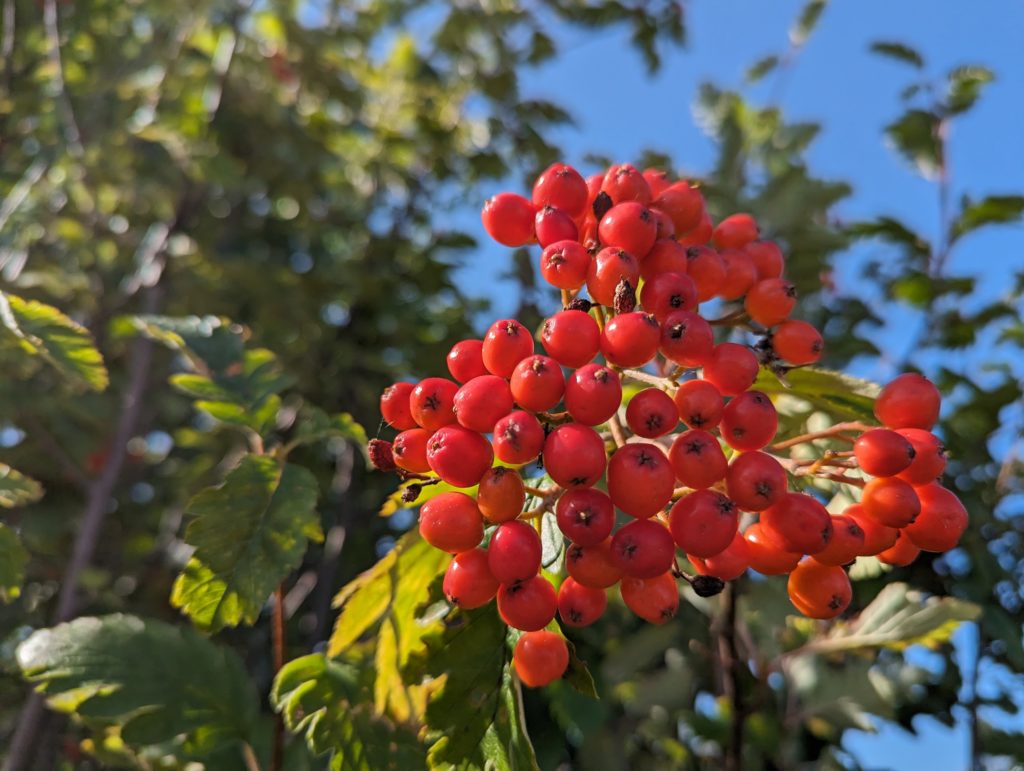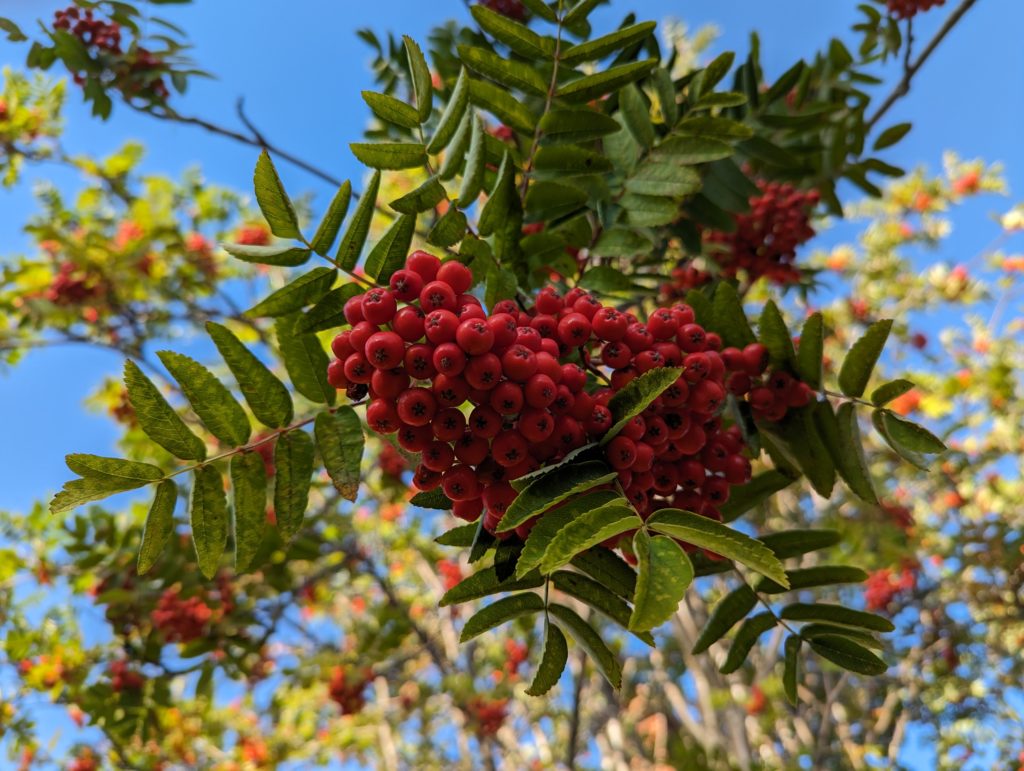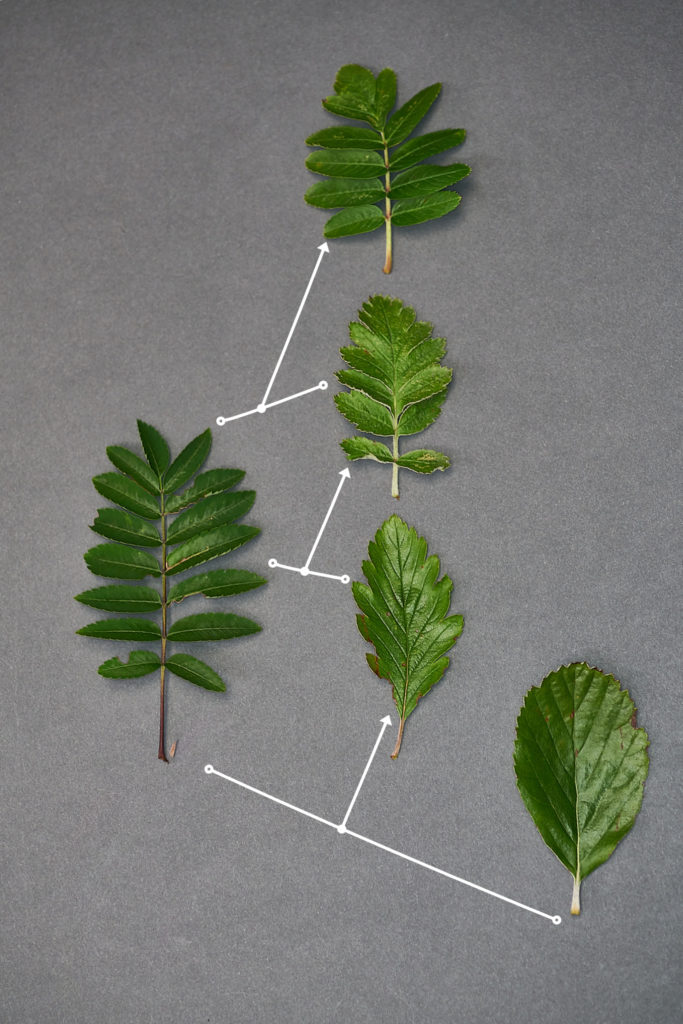Taxonomists – those who classify and name species – are sometimes grumbled about by gardeners because familiar plant names are changed, apparently out of the blue and for no reason. A recent example of this, that may have passed you by, but does have implications for some popular garden trees, is the genus Sorbus, known commonly as rowans and whitebeams.
Sorbus species are small attractive trees with red berries in autumn. In Britain we have, or should I say had, 47 species. It is worth saying that most of these are microspecies that differ in rather subtle ways from each other but remain distinct by virtue of an asexual seed production process – agamospermy – that creates identical clones of the mother tree.

Anyway, avoiding getting bogged down in microspecies, and to cut a long story short, evidence from computer modelling of Sorbus evolution has increasingly shown that the genus is not what taxonomists call a ‘natural’ group. All this means is that the many species in Sorbus cannot be traced back to a single branch in the evolutionary tree. Instead, there are several distinct branches or ‘lineages’ within Sorbus. Re-examination of the plants found that their visible forms (morphology) correlated with the lineages seen in the evolutionary trees generated from data based on genetic (DNA) differences.
As a result, Sorbus was carved up into smaller genera that did form natural groupings. What this means for us in Britain is that we now have just one species that retains its place in Sorbus – the mountain ash or rowan (Sorbus aucuparia). All the rest have moved to other genera and have new names. It is worth saying that the second part of a scientific name usually remains the same even after a species is moved to a new genus (a tweak to the name ending is sometimes needed as Latin words have a gender and the first and second parts of a name must be the same gender).

A further twist to this story is that many of the British microspecies have a hybrid origin between plants that are now in different genera. For example, the whitebeams, with unlobed leaves, are now in the genus Aria and the rowan, with compound leaves divided into many leaflets, is still a species of Sorbus. Both have crossed multiple times to create stable microspecies with varying degrees of lobing of the leaf and sometimes a few free leaflets towards the base of the leaf.
This all sounds complicated. So, to complicate things further, the rules around plant naming say that a genus of hybrid origin needs to have a new name to distinguish it from the two genera that have created it. In other words, the species that arose from a cross between Sorbus and Aria need a new genus name.
This shake up of the taxonomy has changed the names of the three microspecies that are unique to the island of Arran on the west coast of Scotland. Arran whitebeam (Hedlundia arranensis), Arran service-tree (Hedlundia pseudofennica) and Catacol whitebeam (Hedlundia pseudomeinichii) where all previously Sorbus species and have now been moved to the newly created genus Hedlundia as they are the product of inter-generic crossing involving rowan (Sorbus aucuparia) and rock whitebeam (Aria rupicola).

As an aside, Johan Teodor Hedlund was a Swedish botanist who studied species variation in this group of trees, so the new genus is named in his honour.
The Garden’s Scottish Plant Recovery project is working to restore the small and vulnerable populations of all three Arran species by bulking up the numbers in cultivation and carrying out conservation translocations to suitable sites. This work, over three years, supported by NatureScot, will see 1,000 new plants of each species planted out to boost the numbers of individuals in the wild. Seed fertility varies greatly across the three microspecies, but that is a story for another post.
As a postscript, anyone who tells you that taxonomy is just stamp collecting doesn’t know what they are talking about.


- X @TheBotanics
- X @nature_scot
- X and Facebook @ScotGovNetZero
- Facebook @NatureScot
- #NatureRestorationFund
